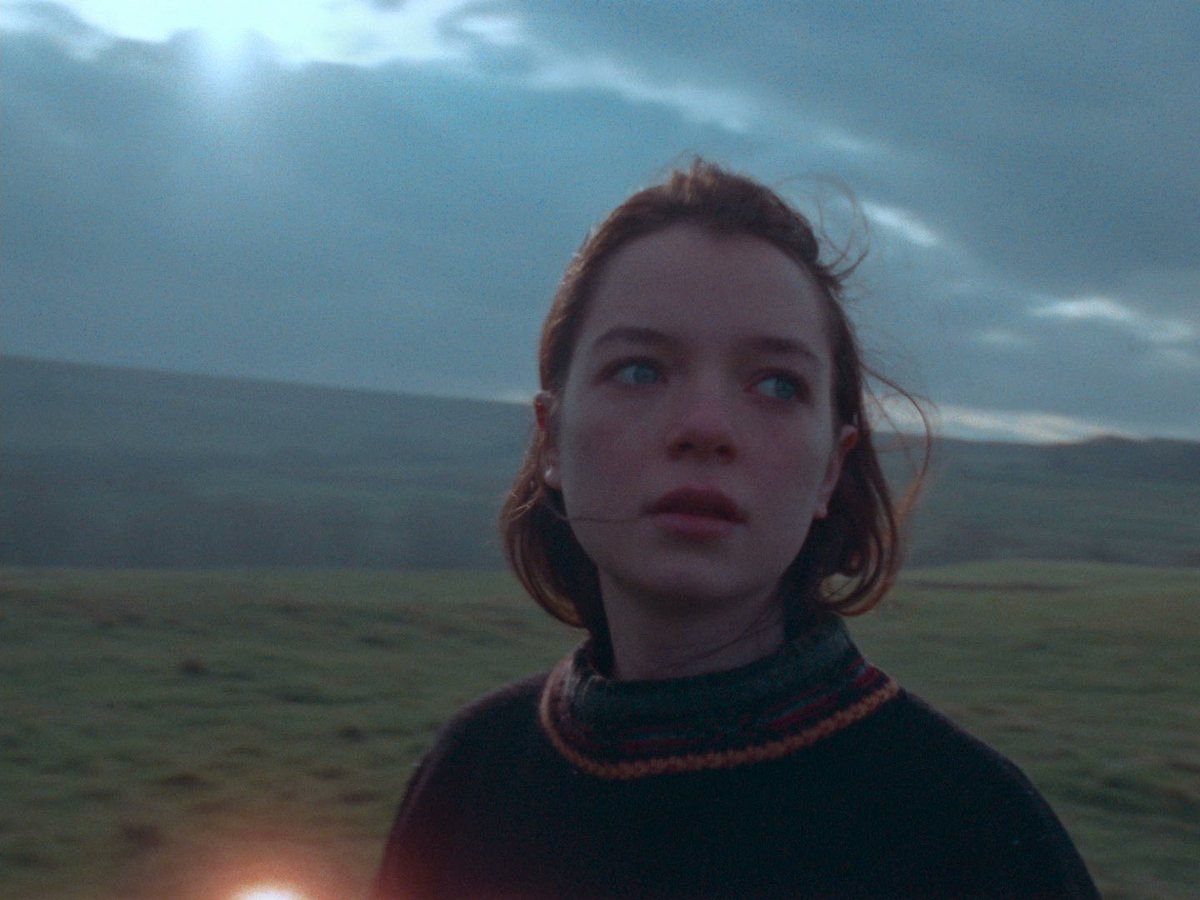Sudden Light

Originally published on 11/08/22 for the UCL Film & TV Society Journal
In Andrei Tarkovsky’s seminal text Sculpting in Time, there is a deliberation upon the relationship of the artist to their audience. Tarkovsky asserts that even when a cinematic entity appears exhausted of all possible meanings or interpretations, it is the responsibility of the artist to embark further in trying to bring meaning to the entity in question. The alternative would be for the audience to be presented with a “final deduction”, which would represent nothing to them when “they have not shared with the author the misery and joy of bringing an image into being”. In this vein, countless artists after Tarkovsky have sought to embody a degree of esotericism in their work whilst aping the magical realism characterising Tarkovsky’s formal approach. Sudden Light, the Cannes-nominated short film by British indie director Sophie Littman, follows this tradition of esotericism created through visual obfuscation and jagged editing.
In isolating two young girls in an ever-changing rural landscape, Littman effectively creates a hermetically sealed sphere of emotional conflict, in which the swiftness of environmental change mirrors the flow of distrust and anxiety between the two. Shooting on 16mm imbues this sphere with a palpable grit, which sharply contrasts with the nigh-ethereal glow cast by the setting sun. Choosing to direct the camera’s gaze towards Mia and Squeeze in the ebb and flow of their arguments, however, relegates this unearthly landscape to something encasing our two protagonists, rather than situating them within it. Amplifying this suffocating effect is Littman’s attention to spatial construction, through which distances between points on the horizon and between areas of the countryside are continually distorted. When foreign entities are introduced into this seemingly idyllic landscape, this spatial distortion heightens the threat they pose to Mia and Squeeze, such as in the introduction of a taciturn, chiselled man standing at the edge of the horizon. Though Sudden Light is, for the most part, an introspective look into emotional turmoil externalized as environmental decay, it is interrupted by brief sequences of fear, with Mia running towards and away from rapidly shifting elements of the landscape. It is in these sequences that the potential of Littman’s spatial distortion is maximized since the lack of any definite knowledge of depth-of-field or distance means that an entity chasing Mia from the top of a hill may as well be right behind her. Moreover, the intermittent jump cuts to macro close-ups of physical decay, recalling Hooper, disrupts the flow of what appears to be a time loop, displacing Mia from the material realm until the borders between past, present and future dissolve.
The aforementioned displacement undergone by Mia and Squeeze manifests in the form of eerie sensorial distortions, particularly in auditory terms. The wooden thuds and cyclical taps characterizing the film’s score proceed along a set continuum- the taps increase in frequency upon a sighting of the unnamed man on the horizon, mirroring Mia’s own increasing panic. As the film progresses, however, the score slowly becomes out of sync with physical action and emotional states being depicted onscreen, thereby contributing to the spatial disarray created by the film’s increasingly jagged editing. The initial regularity of these thuds recall, to a certain extent, Apichatpong Weerasethakul’s Memoria, particularly with regards to how these sounds are so closely connected to the environment- or, as towards the end of the film, the lack thereof. The sounds of foliage being brushed across by heavy boots and the screech of the wind are other environmental signifiers of anxiety as Mia begins to realize that she, her sister and her dog are not the only occupants of this remote landscape. Even the grating, deep voice of the man on the horizon acts as an element of the film’s sound design that heightens the threat posed by the environment to Mia and Squeeze. To this effect, then, the presence and absence of auditory signifiers is the lynchpin to ensuring tonal consistency in the film. However, it is where the sound design succeeds that other formal elements fall short.
In particular, for a film ostensibly inspired by the personal strife of the artist, it is rather difficult to connect to Mia and Squeeze, especially considering how the universality of feeling vulnerable in a world that you know nothing about should be an emotional aspect of the film that the audience could empathise with. One might posit that this sense of detachment is intentional, acting as a conduit to induce in the audience the same state of disassociation that Mia undergoes onscreen. However, the flaw in this assumption lies in the fact that there is at once too much and too little explained, thereby failing to either introduce a sense of intrigue as to the seemingly supernatural occurrences in the landscape or to induce a sense of fear as to the threats posed to the girls’ safety. There is a somewhat curious narrative thread introduced halfway throughout the film, which suggests the existence of temporal residue-that is, the material manifestation of actions performed in both the present and the future. Torn remains of rope left by the man on the horizon act as signifiers as to what point in time Mia occupies, and so their disappearance/reappearance acts as a far more compelling narrative thread than the mystery of what Squeeze and Mia are undergoing. It is therefore unfortunate that this thread is relegated to the background, instead centring on the infirmed status of the girls’ father, which renders any of the “mysterious” happenings all too easily explainable as the weight of adult responsibility for Squeeze’s safety crashing down on Mia’s shoulders. When this explanation occurs to the audience, it renders much of the film’s dialogue didactic, further undermining the decision to make these conversations the film’s key turning points. The threat of the environment lies in its unknowability, and once it becomes knowable, the threat disappears, leaving behind little more than pretty 16mm photography.
Moreover, much like the result of the film’s formal influences, its thematic concerns also reside in the realm of pastiche. It is less the film’s own shortcomings, and more the reliance of contemporary indie filmmakers upon a repetition of certain narrative frameworks, that the vague allusions of grief underlining the girls’ actions are exhausting more than anything else. The sunny idyll of the rural landscape concealing its darker intentions is perhaps the most oversaturated archetype of film to dominate box offices, short of blockbusters cannibalizing the corpse of decades-old IP. The relative success of contemporary folk horror in the vein of The Lighthouse and Midsommar means that horror based on a fear of tangible violence is being increasingly dismissed as less “sophisticated”, on the grounds that it typically has less thematic value (a misconception that would require a whole other essay to deconstruct). Therefore, the uncanny resemblance of Sudden Light to this breed of archetypal folk horror means that every “twist” is not only telegraphed from a mile away but literalized in the form of dialogue that leaves no room for further interpretation, which is ironic, considering the central mystery guiding the film is intended to leave interpretation up to the viewer. The constraints inherent to the format of the short film abort the film at such a point so as to leave behind little more than a mystery absent of intrigue. To be clear, though, the runtime constraints imposed on the film are not necessarily to blame for its shortcomings- the experimental shorts of James Benning, which are often centred around the natural environment, are much more formally inventive despite often having no dialogue and not being shot on 16mm. Sudden Light, then, is a visually striking experiment limited by its reliance on hollow pastiche, which disfigures it into a microcosm of tired archetypes and undermines the often impressive sensorial impact of its sound design.
